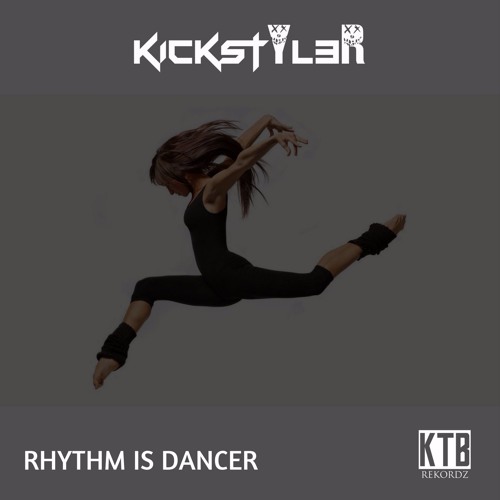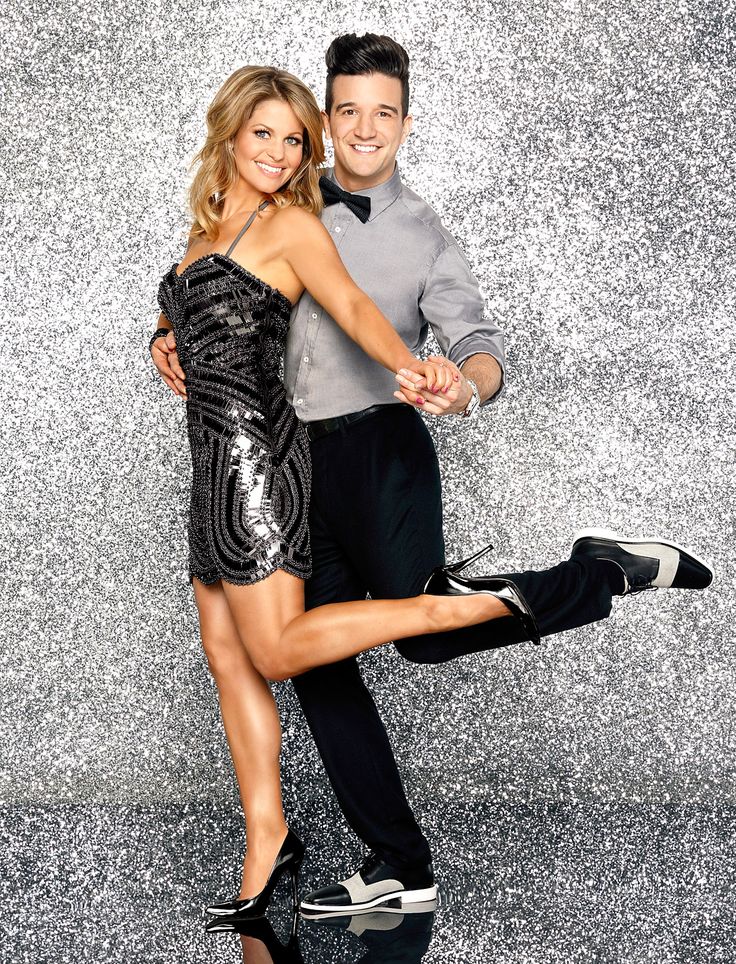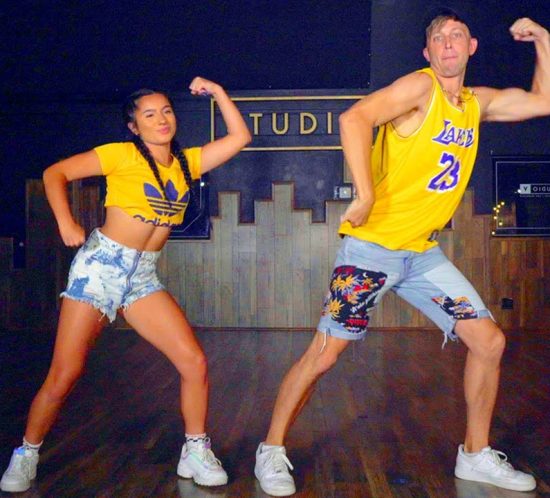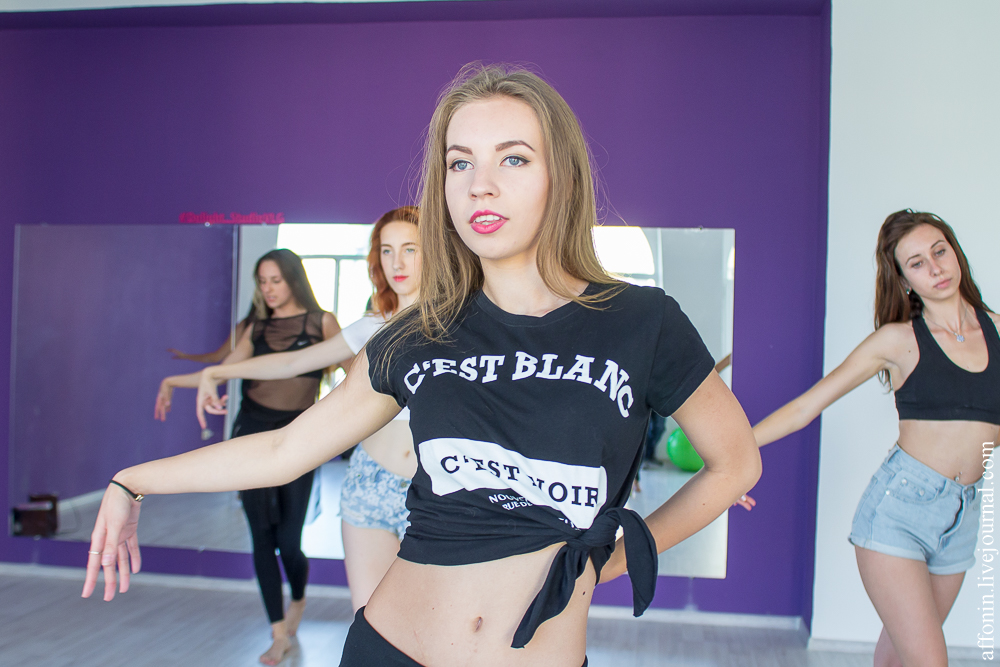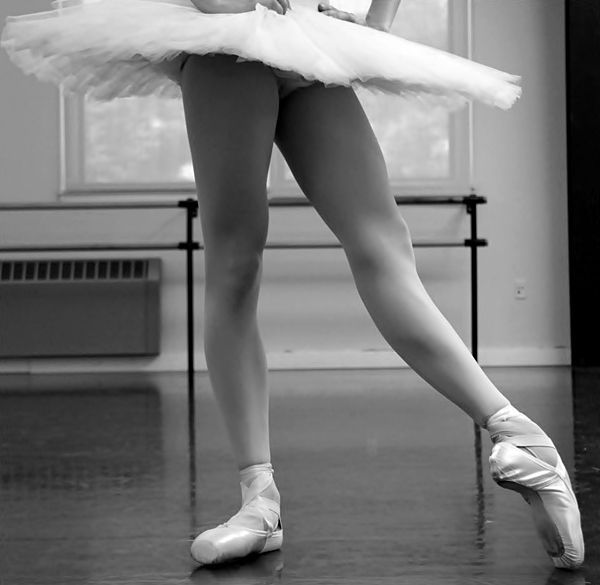How to dance the samba for beginners
Learn Basic Samba Steps
Samba is a lively dance of Brazilian origin. It's a popular party dance, characterized by simple forward and backward steps and rhythmic hip movements.
- Basic steps
- Instructions & Diagrams
- Video
- Recommended Video Lessons »
Quick intro
Samba is the national dance of Brazil, some say the spirit and soul of the country. In Brazil, it is a solo dance, performed at street festivals and carnivals. Ballroom samba, on the other hand, is a partner dance that has little in common with the original form.
Although in Brazil samba remains a solo form, in other countries it evolved into a partner dance and was standardized as a ballroom dance in 1956. Today it's one of the most common Latin American dances.
Many versions of samba exist - Carnivale, Mesemba, Carioca, Batucado, Conga, just to name a few. Here we'll focus on the ballroom version, quite popular in North America and Europe, with both the younger and older generations.
Basic steps
Ballroom samba is usually danced to music written in 2/4 time, meaning there are two beats in each measure. The basic box step consist of three steps. This means that three steps are performed in two beats of music.
The basic rhythm is 1 & 2, 3 & 4, 5 & 6, 7 & 8, commonly described as "one, uh two", "three, uh four", and so on. Usually you count 8 beats before resuming the count.
The most characteristic element of samba is probably the so called samba bounce, which is achieved through rhythmic bending and straightening of the knees. See the video below for detailed explanation.
Instructions & Diagrams:
Ballroom samba is danced in a closed position, with partners slightly apart. The lady's right hand and the man's left hand are held about the lady's eye level. The man's right hand is placed on the lady's shoulder blade. The lady's left hand is placed flat on the man's back.
Basic step is a very simple box step. Remember, the rhythm is 1-uh-2, 3-uh-4...
Basic Steps for Men
- Step forward with your left foot (count 1)
- Move your right foot to your left foot (uh)
- Left foot in place, weight shifts to it (count 2)
- Step backward with your right foot (count 3)
- Move your left foot to your right foot (uh)
- Right foot in place, weight shifts to it (count 4)
Basic Steps for Ladies
- Step backward with your right foot (count 1)
- Move your left foot to your right foot (uh)
- Right foot in place, weight shifts to it (count 2)
- Step forward with your left foot (count 3)
- Move your right foot to your left foot (uh)
- Left foot in place, weight shifts to it (count 4)
Video
In this video Leon and Kim will show you the basic steps in addition to a whisk action, which is an extention of the basic movement to the side.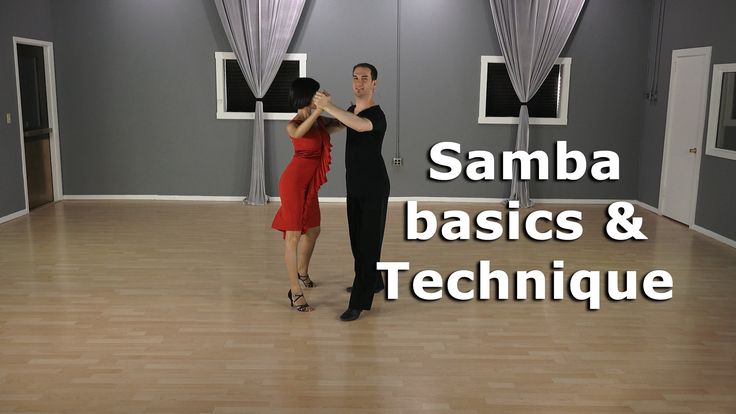 You will also learn the principles of bounce action, something that is absolutely crucial to understand:
You will also learn the principles of bounce action, something that is absolutely crucial to understand:
more videos »
If you're interested in more video lessons like this one, take a look at our recommendations »
How To Dance Samba For Beginners (3 Samba Basic Steps) -
Learn 3 Samba dance steps in the International Latin style below.
Samba is one of the most popular Ballroom dances with unique styling and technique. In this ultimate guide for beginners you will learn the most basic samba steps, as well learn about the character of this dance and more.
Samba basic step #1 – Reverse Basic Movement:
Summary of Samba Basic Steps
Men:
Forward with left foot
Close right foot to left foot (Put partial weight on it)
Replace weight on the left foot
Back with the right foot
Close left foot to right foot (Put partial weight on it)
Replace weight on the right foot
Women:
Back with the right foot
Close left foot to right foot (Put partial weight on it)
Replace weight on the right foot
Forward with left foot
Close right foot to left foot (Put partial weight on it)
Replace weight on the left foot
Samba basic step #2 – Whisks:
Summary of Whisk steps:
Men:
Side with the left foot
Cross right foot behind left foot (Put partial weight on it)
Replace weight on the left foot foot
Side with the right foot
Cross left foot behind right foot (Put partial weight on it)
Replace weight on the right foot foot
Women:
Side with the right foot
Cross left foot behind right foot (Put partial weight on it)
Replace weight on the right foot foot
Side with the left foot
Cross right foot behind left foot (Put partial weight on it)
Replace weight on the left foot foot
Next: How To Count Samba
Samba Count Summary:
The Samba music is phrased in counts of 8 and the basic rhythm of it is: 1 a 2, 3 a 4, 5 a 6, 7 a 8. The beat value is 3/4, 1/4, 1 (For each 3 steps). This means that you would hold the first step for 3/4 of a beat, then make a very quick step which is only a 1/4, and the last step is 1 full beat. There are many other timings in Samba including Slow, Quick, Quick and 1/2, 1/2,1 and 1,2,3 (all equal) and more.
The beat value is 3/4, 1/4, 1 (For each 3 steps). This means that you would hold the first step for 3/4 of a beat, then make a very quick step which is only a 1/4, and the last step is 1 full beat. There are many other timings in Samba including Slow, Quick, Quick and 1/2, 1/2,1 and 1,2,3 (all equal) and more.
Lastly, What is the Samba?
The Ballroom style Samba got a lot of it’s character and influence from the Brazilian Samba. It has a very energetic dance with lots oh hip and body movement. One of the most important technical aspects of the Samba is that it uses what is called “bounce” technique where you bend and straighten your knees continuously through out the movements. Most of the beginner (Bronze level) moves all use this bounce technique.
Want More Dance Lessons?
We offer a membership that includes access to 250+ Ballroom and Latin dance videos online. Including American & International style videos.
Membership Info & Registration
Want More? Get More Dance Lessons:
More Samba Lessons
Cha Cha dance lessons
Rumba Dance Steps For beginners
East Coast Swing Dance Moves
Salsa Basic Steps
How To Dance Bachata
How To Waltz Dance
Any Questions? Please leave your comments below…
prices, reviews and addresses of dance studios
Samba - prices and reviews. Comparative table of dance schools in St. Petersburg, where there is samba training.
Comparative table of dance schools in St. Petersburg, where there is samba training.
Service:
Location:
Show
changes
Show map
The Dance.Firmika.ru portal contains information about where you can sign up for samba classes in St. Petersburg: addresses and telephone numbers of dance schools and dance studios, prices for the most popular destinations, student reviews. For greater convenience in using the portal and searching for a dance school, we suggest using a convenient filter by districts and metro stations. Visual tables will help you compare the cost of classes and trainings in different dance studios in the city, choosing the best option for the price.
Samba is a very famous Brazilian dance that belongs to one of the five dances of the standard Latin American Ballroom Program. The distinguishing features of samba include syncopated rhythm, use of cross rhythms and polyrhythms. Rhythmic polyphony is set for through a wide range of percussion instruments.
Rhythmic polyphony is set for through a wide range of percussion instruments.
Samba Dance for Beginners - Style Features
Sparkling, alluring and full of life, samba is inextricably associated with Brazilian carnivals and bright colors. Embraced by the thunder of drums Brazil plunges into the rhythms of incendiary samba, spending a cheerful and noisy holiday. The main event of the carnival is the parade of samba schools, where beauty and the skills of the dancers are harmoniously complemented by amazing decoration and luxury suits. Anyone who has ever been to such an event will no longer be able to calmly walk past the samba dancers.
Samba dance lessons attract students with energy and brightness. Dance characterized by active elements, complemented by a light and springy step, without sharp falls and rises, a syncopated rhythm is often observed with a large moving up the dance floor. Dance easily absorbs almost every South American rhythms, creating on their basis a dynamic and spectacular movement picture.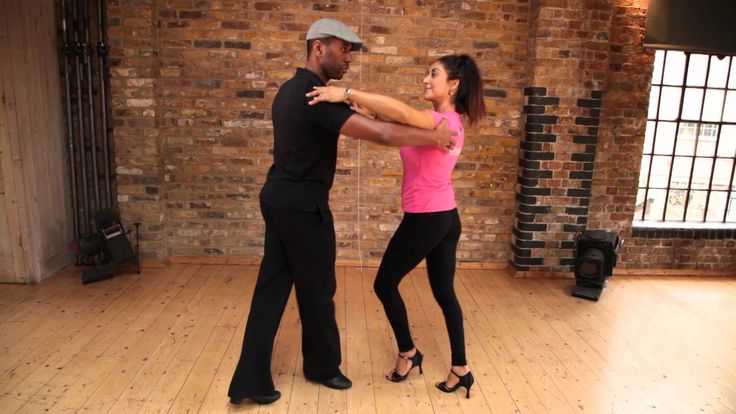 The samba dance video clearly demonstrates the characteristic style features, emphasizing the elegance of the dancers.
The samba dance video clearly demonstrates the characteristic style features, emphasizing the elegance of the dancers.
As the main movements of the samba dance, one can note the main forward movement. Famous Latin American elements of the hips. With their help, you can carefully work out this area of \u200b\u200bthe body and teach her to control. Due to such elements, samba looks great both in pairs and solo.
Varieties of samba
- Samba on feet - mainly danced women. In pair performance, partners are at a distance from each other. friend.
- Couples club dance - uses huge the number of various elements, including those borrowed from waltz, Argentinean or Brazilian tango, as well as acrobatic movements.
- Pagode - similar to a club dance in pairs, but does not use acrobatic elements. Partners dance close to each other friend.
- Samba de roda - the most ancient species samba, in which the performers stand in a circle, only two dance women.

- Ballroom samba couples - more like brazilian waltz.
Samba training in St. Petersburg - classes and lessons in dance schools
Today, finding samba lessons using our portal is becoming easy and simply. Its pages contain the most up-to-date information about the studios, offering samba training to their students. The tables show the price one-time samba lessons in different institutions, the cost of subscriptions. So Thus, you can quickly compare prices and choose the best option.
The presence of feedback from students of dance schools will allow you to get acquainted in absentia with the level of the studio, assess the qualifications and approach of the teacher.
Questions on the topic "Samba"
Ask a new question
The question will be asked to all schools on the portal after verification. Answers usually come within a day.Ask a question
Nobody has asked this question yet. You can ask the first one.
You can ask the first one.
Show on map
Samba | High School of Dance
The history of samba is the story of the fusion of African dances that came to Brazil with slaves from the Congo and Angola, with Spanish and Portuguese dances brought from Europe by the conquerors of South America. In the 16th century, the Portuguese brought with them many slaves from Angola and the Congo to Brazil, who brought dances such as Catarete, Embolada and Batuque from Africa. These dances were considered very sinful in Europe, because during the dance the dancers touched their navels (namely, their navels, not their stomachs - the Inquisition was then very strict and intellectually developed). Embolada - a dance depicting a cow with balls on its horns for safety, the word "embolada" in Brazil is now synonymous with the word "stupid". The Batuque was so popular that King Manuel I of Spain issued a law banning the dance. This is a circle dance with Charleston-like steps, with a couple dancing in the center of the circle. A complex dance formed by combining the movements of these dances with additional swings of the body and hips was called Lundu in the 1830s.
This is a circle dance with Charleston-like steps, with a couple dancing in the center of the circle. A complex dance formed by combining the movements of these dances with additional swings of the body and hips was called Lundu in the 1830s.
Later, steps taken by participants in the carnival in Rio (progressives, loks, etc.) were introduced into the dance, which were called Copacabana (the name of the beach near Rio de Janeiro). Gradually, the high society of Rio de Janeiro also began to dance this dance, although it was changed to allow dancing in a closed dance position (which was then considered the only possible and correct one). The dance was then called the Zemba Queca, and was described in 1885 as "a graceful Brazilian dance". The origin of the name "Samba" is unclear, although "Zambo" means "child of a Negro and a local (Brazilian) woman" (mulatto). The dance was later merged with Maxixe. This is a Brazilian circle dance, described as Two Step. Maxixe was known in the USA at the beginning of the twentieth century.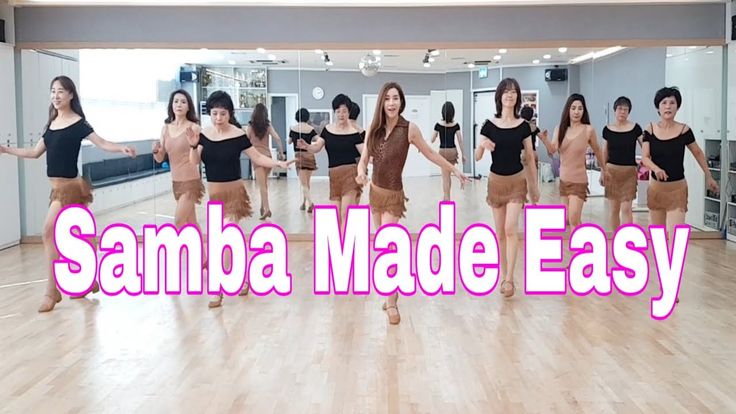 Maxixe became popular in Europe after a show in Paris at 1905. He danced like polka steps performed to the music of the Habanera (Cuban Habanera). Now in samba there is a maxixe movement, consisting of a chasse and a point (chasse and point). A samba variant called Carioca (from Rio de Janeiro) became known in the UK in 1934. It was performed by Fred Astaire in Flying Down to Rio, his first film with Ginger Rogers. . In the US, Carioca appeared in 1938, its popularity peaked in 1941, after the performance of Carmen Miranda (Maria do Carmo Miranda da Cunha) in feature films, especially in the film "That Night in Rio de Janeiro" ("That Night in Rio" ).
Maxixe became popular in Europe after a show in Paris at 1905. He danced like polka steps performed to the music of the Habanera (Cuban Habanera). Now in samba there is a maxixe movement, consisting of a chasse and a point (chasse and point). A samba variant called Carioca (from Rio de Janeiro) became known in the UK in 1934. It was performed by Fred Astaire in Flying Down to Rio, his first film with Ginger Rogers. . In the US, Carioca appeared in 1938, its popularity peaked in 1941, after the performance of Carmen Miranda (Maria do Carmo Miranda da Cunha) in feature films, especially in the film "That Night in Rio de Janeiro" ("That Night in Rio" ).
Increased attention to samba in Europe began in the 1950s, when Princess Margaret, who played a leading role in British society, became interested in it. The samba was standardized for international performance by Pierre Lavelle in 1956. The dance in its current modern form still has figures with different rhythms, conveying the dance's multi-faceted origins, for example, the Boto Fogo is performed in the rhythm "1 & a 2" - in "quarter count" , and the right rolls (Natural Rolls) in a simpler "1 2 &", in "half rhythm".

